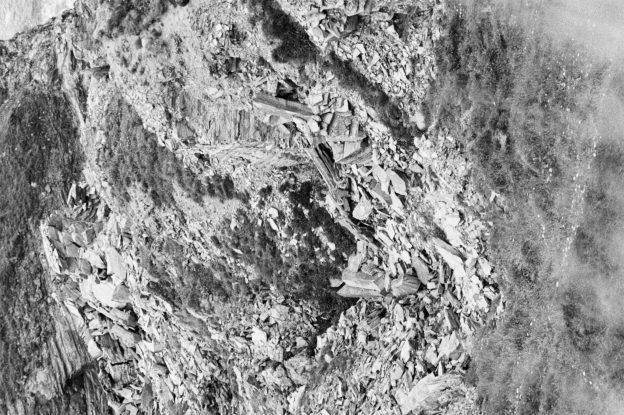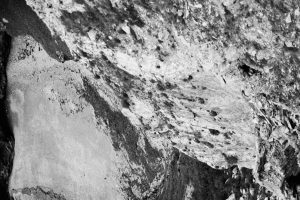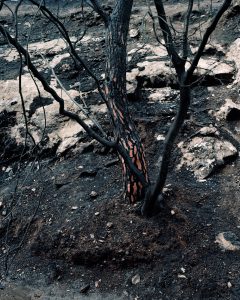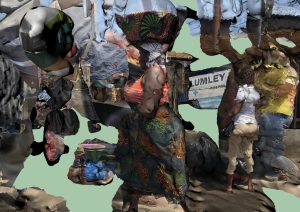with photographs from DEAR LITHIUM,
by KATE HOLFORD
Maybe there’s no way to reach you, save for this message in a pixelated bottle, all truths having been flattened, disembodied, unmoored in the death-throes of asymmetrical dominance, or the metastasizing spread of the digital.
I’ll move on. And tell you about the gift I seized from beside a grove of olive trees, just past a valley inside the West Bank Barrier Wall. It’s a broken top of a bottle I wore as a ring until it split, its better half buried in a drawer somewhere, lost from view. Metonym of the incarcerations everywhere, this shard has always cut me and my unworked, informational flesh. Flesh that arbitrarily passes borders unimpeded. Little thing, it represents the forces clashing to become this life of ours, the “ours” cast harshly into unified view by the spread of nothing you can see: a virus. And it’s strange to admit, this broken shard of glass, it gives me something too, something I can’t see or quite describe, something adjacent to what’s called love.
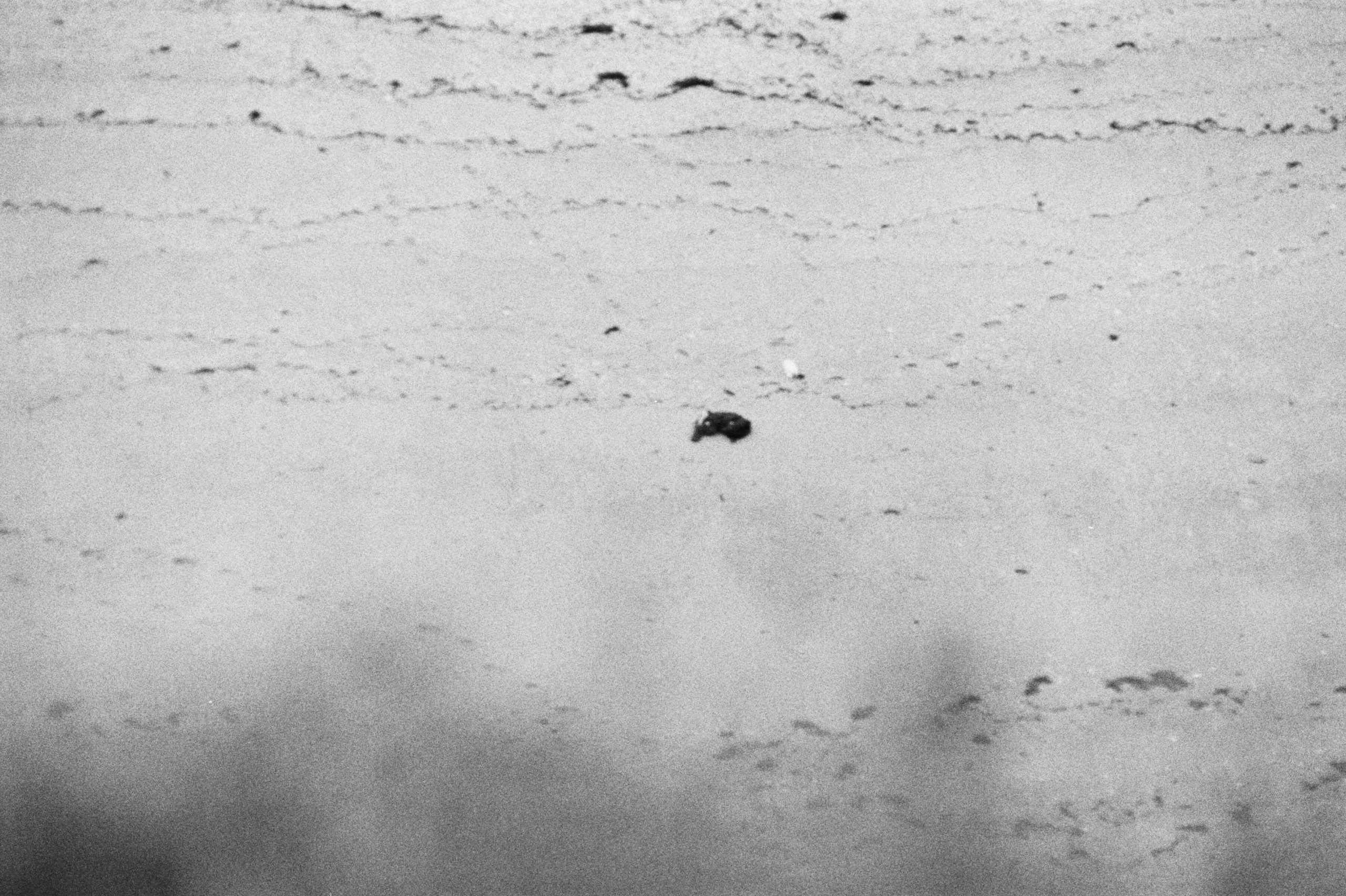
This bottle top’s form, its meaning, its concrete gleam in my palm, and my gaze upon it, (while I think with concepts about the labour that was done to make it, to break it, to bring me so far from home to find it) could be described differently, for example as “subject” and “object” intermingling to make the movement of a truth. The point is that the miniscule—or if you prefer, the particular—has a way of fractally manifesting the massive—or if you prefer, the universal. I prefer the collective.
Maybe I digress. Maybe not.
When we say SEIZE, we don’t only mean to take hold, we also mean to take by force, or to take back by harnessing power. We mean the antagonism of power’s attendants like liberation and possession or oppression: of your image, your voice, your body, your will, your land, your life. Your gaze.
Your desire.
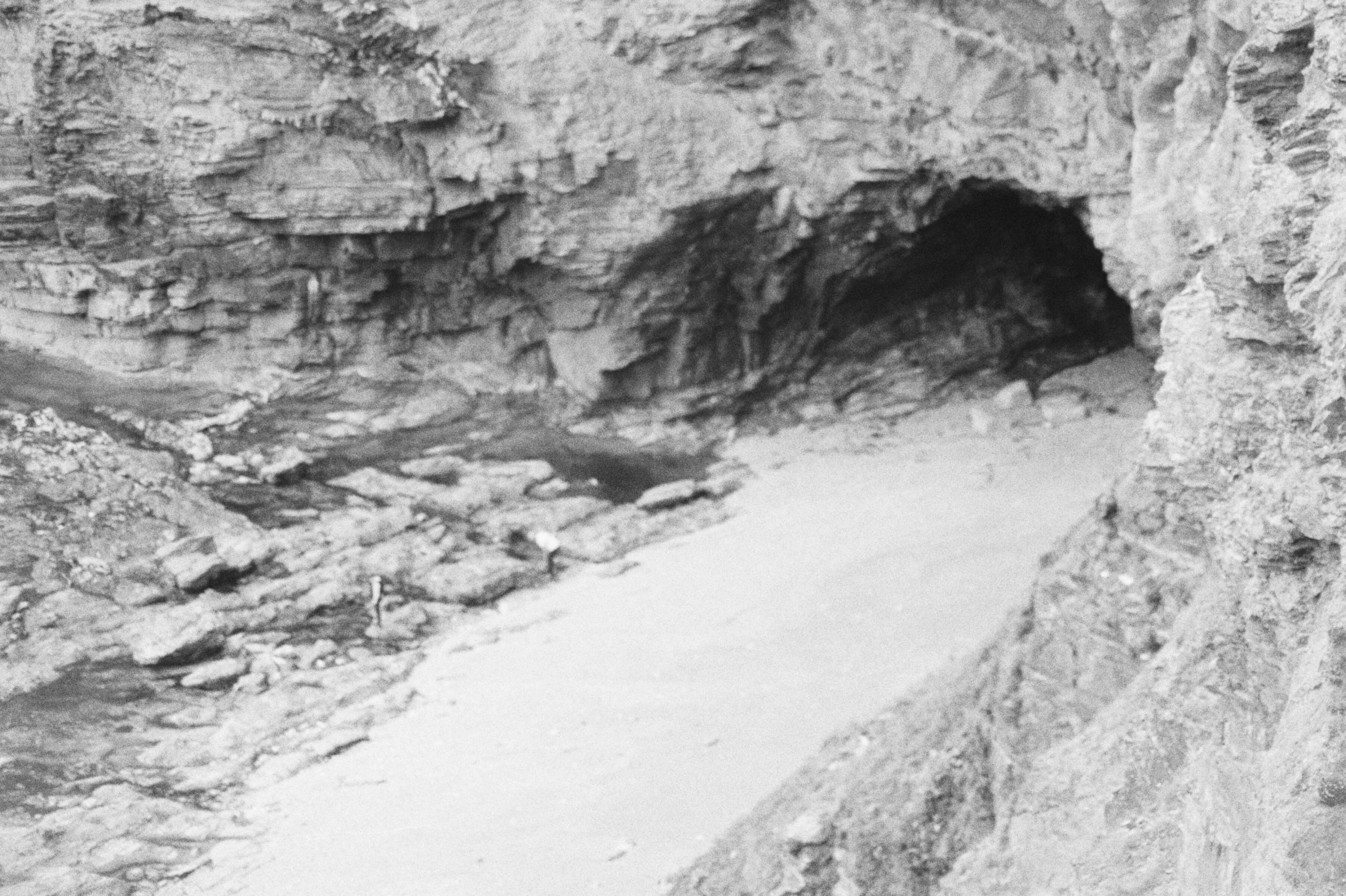
Anyone can become blamed and unjustified in expressions of hysteria, rage, or grief when truths are flattened and unmoored, when the wrong person tells the story. Anyone can be blamed when faith lies in something you can’t describe, in something you can’t touch. That something is what my bottle top brings me, like I said: something adjacent to love. Love, maybe, for one plot of earth, for one child’s breath, for the arc of just one flawed human’s eyebrow or the curve of one thumb. In any case, the distance between the wrong story and the grieving you, it produces an antagonism, an aggrieved tension, which, in oppositional relation (the wrong story vs. you), could be defined as a lie.
A lie: antagonistic, aggrieved, and tense relational movement between a person and a story imposed on them.
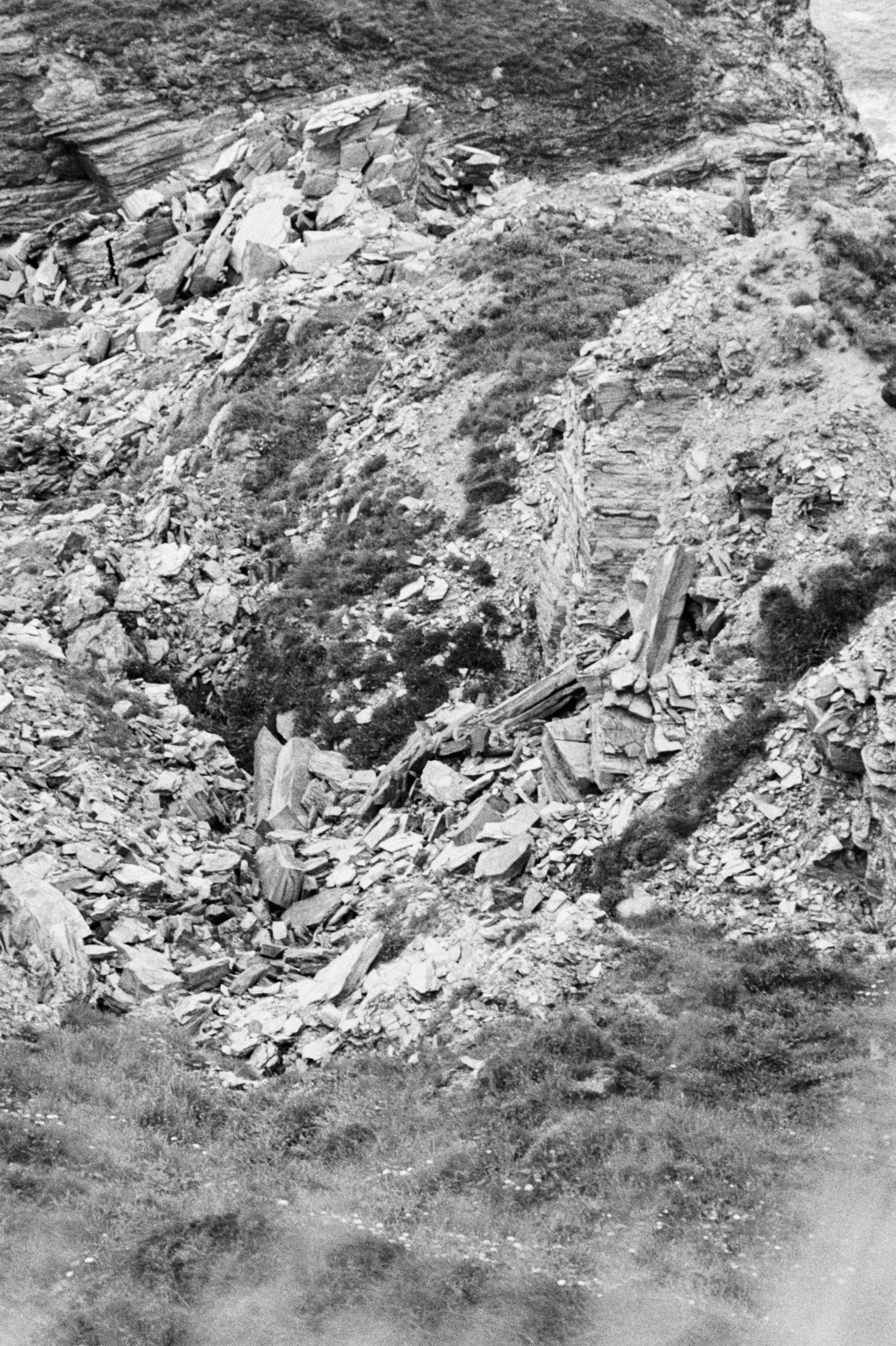
Stories have effects. The wrong story, the lie, means somebody, and their force, wins: you, or their story (the wrong story). With a story, somebody can seize your image, your voice, your body, your will, your land, your life, your gaze, your desire. Or, just like I gingerly clasp this shard of glass to my finger, just as you walk the ridge your mother has walked for decades, just as you would cling to your lover’s aching torso in the night: the one to seize and tell about it could be me. Or, the one to seize and tell about it could be you.
Love,
Anne Marie Wirth Cauchon
“. . . I write to you in this way as a form of leverage, inserting an artefact in the image so it grows larger with each copy, distracting you—a blank hole where a detail should be. When they’re searching for signs of lithium in coastal rockfaces, they call these voids. So take a sedative. This is where I begin dear Baby, dear Lithium. And it’s slipping again—the here and the not here, the body I’m in and the one you assume. Who are you? You’ll never know. I’ve never met you.
I write from my room, in the city, and I love you.”
Dear Lithium, is a research project that circles the digital world to provoke questions about reality, place, and distance. Playing with paradoxes of fictionality, modes of correspondence, and simulacra, the project is partially visible as a collection of fragmented poems, letters, images, and texts on the website dear-lithium.exposed. It manifests in its complete form as a single-edition print publication, placed in circulation via a public book exchange near the site of the UK’s first pilot lithium extraction plant, United Downs, Cornwall. In part, it is intended as a critical reflection on the increasing reliance on technological interfaces for curatorial and collaborative practices. Visit the project website:
ANNE MARIE WIRTH CAUCHON editor
Anne Marie Wirth Cauchon is Editor-in-Chief of Stillpoint Magazine, and Creative Director of the PrairieCare Institute’s Center for Applied Psychoanalysis, the mother of two, a PhD candidate in English and Comparative Literature at the University of Minnesota, and the author of the novel Nothing.
KATE HOLFORD artist
Kate Holford is Art Director of Stillpoint Magazine. She is an artist and writer based in Glasgow, UK.
© Copyright for all texts published in Stillpoint Magazine are held by the authors thereof, and for all visual artworks by the visual artists thereof, effective from the year of publication. Stillpoint Magazine holds copyright to all additional images, branding, design and supplementary texts across stillpointmag.org as well as in additional social media profiles, digital platforms and print materials. All rights reserved.
